Principles and applications of diffusion-weighted imaging in cancer detection, staging, and treatment follow-up
- PMID: 21997994
- PMCID: PMC8996338
- DOI: 10.1148/rg.316115515
Principles and applications of diffusion-weighted imaging in cancer detection, staging, and treatment follow-up
Abstract
Diffusion-weighted imaging relies on the detection of the random microscopic motion of free water molecules known as Brownian movement. With the development of new magnetic resonance (MR) imaging technologies and stronger diffusion gradients, recent applications of diffusion-weighted imaging in whole-body imaging have attracted considerable attention, especially in the field of oncology. Diffusion-weighted imaging is being established as a pivotal aspect of MR imaging in the evaluation of specific organs, including the breast, liver, kidney, and those in the pelvis. When used in conjunction with apparent diffusion coefficient mapping, diffusion-weighted imaging provides information about the functional environment of water in tissues, thereby augmenting the morphologic information provided by conventional MR imaging. Detected changes include shifts of water from extracellular to intracellular spaces, restriction of cellular membrane permeability, increased cellular density, and disruption of cellular membrane depolarization. These findings are commonly associated with malignancies; therefore, diffusion-weighted imaging has many applications in oncologic imaging and can aid in tumor detection and characterization and in the prediction and assessment of response to therapy.
© RSNA, 2011.
Figures

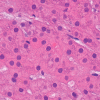











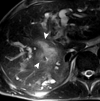

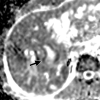












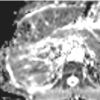

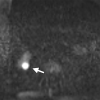
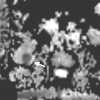

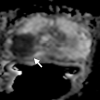




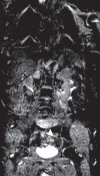
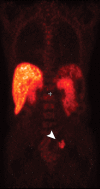
Similar articles
-
Whole body MRI: improved lesion detection and characterization with diffusion weighted techniques.J Magn Reson Imaging. 2013 Aug;38(2):253-68. doi: 10.1002/jmri.24285. J Magn Reson Imaging. 2013. PMID: 23960006 Free PMC article. Review.
-
Diffusion-weighted MR imaging for whole body metastatic disease and lymphadenopathy.Magn Reson Imaging Clin N Am. 2009 May;17(2):245-61. doi: 10.1016/j.mric.2009.01.006. Magn Reson Imaging Clin N Am. 2009. PMID: 19406357 Review.
-
Whole-body diffusion-weighted MRI: tips, tricks, and pitfalls.AJR Am J Roentgenol. 2012 Aug;199(2):252-62. doi: 10.2214/AJR.11.7866. AJR Am J Roentgenol. 2012. PMID: 22826385 Review.
-
Body Diffusion-weighted MR Imaging in Oncology: Imaging at 3 T.Magn Reson Imaging Clin N Am. 2016 Feb;24(1):31-44. doi: 10.1016/j.mric.2015.08.007. Epub 2015 Oct 27. Magn Reson Imaging Clin N Am. 2016. PMID: 26613874 Review.
-
Diffusion-weighted MRI in the body: applications and challenges in oncology.AJR Am J Roentgenol. 2007 Jun;188(6):1622-35. doi: 10.2214/AJR.06.1403. AJR Am J Roentgenol. 2007. PMID: 17515386 Review.
Cited by
-
Diffusion magnetic resonance imaging of chest tumors.Cancer Imaging. 2012 Oct 26;12(3):452-63. doi: 10.1102/1470-7330.2012.0041. Cancer Imaging. 2012. PMID: 23108223 Free PMC article. Review.
-
The Use of Chest Magnetic Resonance Imaging in Malignant Pleural Mesothelioma Diagnosis.Diagnostics (Basel). 2022 Mar 19;12(3):750. doi: 10.3390/diagnostics12030750. Diagnostics (Basel). 2022. PMID: 35328305 Free PMC article. Review.
-
Diffusion-weighted imaging (DWI) in lymph node staging for prostate cancer.Transl Androl Urol. 2018 Oct;7(5):814-823. doi: 10.21037/tau.2018.08.04. Transl Androl Urol. 2018. PMID: 30456184 Free PMC article. Review.
-
CT and MR of recurrent primary cutaneous adenoid cystic carcinoma with multiple metastases.BJR Case Rep. 2016 Nov 2;2(4):20150243. doi: 10.1259/bjrcr.20150243. eCollection 2016. BJR Case Rep. 2016. PMID: 30460012 Free PMC article.
-
Quantitative Imaging in Pediatric Hepatobiliary Disease.Korean J Radiol. 2019 Sep;20(9):1342-1357. doi: 10.3348/kjr.2019.0002. Korean J Radiol. 2019. PMID: 31464113 Free PMC article. Review.
References
-
- Koh DM, Collins DJ. Diffusion-weighted MRI in the body: applications and challenges in oncology. AJR Am J Roentgenol 2007;188(6):1622–1635. - PubMed
-
- Taouli B, Koh DM. Diffusion-weighted MR imaging of the liver. Radiology 2010;254(1):47–66. - PubMed
-
- desouza NM, Reinsberg SA, Scurr ED, Brewster JM, Payne GS. . Magnetic resonance imaging in prostate cancer: the value of apparent diffusion coefficients for identifying malignant nodules. Br J Radiol 2007;80(950):90–95. - PubMed
-
- Sinha S, Lucas-Quesada FA, Sinha U, DeBruhl N, Bassett LW. In vivo diffusion-weighted MRI of the breast: potential for lesion characterization. J Magn Reson Imaging 2002;15(6):693–704. - PubMed
-
- Kwee TC, Takahara T, Ochiai R, et al. . Whole-body diffusion-weighted magnetic resonance imaging. Eur J Radiol 2009;70(3):409–417. - PubMed
Publication types
MeSH terms
Substances
Grants and funding
LinkOut - more resources
Full Text Sources

